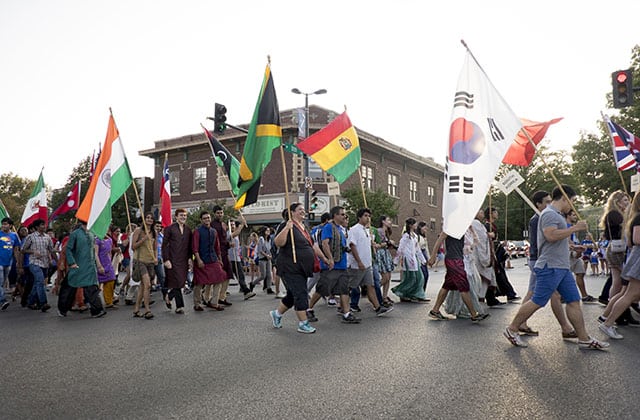How Long Does It Take to Get a Student Visa? [Timeline]
Our student visa application timeline will help you stay on track
Now that you are going to study in the United States, you may be asking yourself: How long does it take to get a student visa? To study in a full-time academic program, you will need an F-1 student visa, and it takes a while to get one. But don’t worry. If you plan for each step of the visa process, you will get yours with plenty of time to make it to your first day of classes.
So, let’s imagine that you want to study in the United States a year and a half from today. Right now is the time to begin planning.
12–18 months before
Get your university application documents ready
During this time, you should be preparing to apply to a U.S. university. To get into U.S. programs, you must meet their admissions requirements. To apply, you will be required to submit:
• A copy of your passport
• Your school transcripts
• An English test score like the IELTS or TOEFL
6–12 months before
Apply to a university and collect bank statements from your sponsor
At this stage, you should apply and get accepted to a U.S. university.
Some institutions require that you send in a bank statement from your sponsor (the person who is paying for your education) before they grant you admission. Some institutions require bank statements after you apply to prove you have the funds to pay for your studies.
For instance, the estimated cost of Florida International University’s two-semester Global First Year Program in 2019 is $34,900 to $37,799. Your sponsor’s bank statements must show at least this amount in their account.
Lastly, make sure the university is SEVP-accredited. You can only get an I-20, which is a document necessary to apply for your visa, if your school is accredited.
5–6 months before
Pay the fees, complete the DS-160 application & schedule your visa interview
Once you receive your admission letter and your I-20, you must pay the I-901 SEVP Fee, which is $350.
You can pay the I-901 Fee online. Print out the confirmation page so you can bring it to your visa interview appointment. Then, fill out the DS-160 Non-Immigrant Visa Application online.
Make sure to have your passport and your I-20. You will also be required to give your travel itinerary and will have to answer additional questions about your studies.
Lastly, make sure to have a visa photo to upload onto the DS-160 form. Once you complete the form, you will be given a page with a barcode and application ID number. Print out the confirmation page and take it your visa interview appointment.
Pay the Visa Application Fee of $160 US Dollars and print out the receipt. Then, schedule your visa application interview through U.S. Visa Services. Click on Non-Immigrant Visa Applicant to find your country’s page.
3–4 months before
Attend the visa interview and collect your visa
Don’t forget to bring the following documents to your visa interview:
• Your passport
• One copy of your visa photo
• The DS-160 confirmation page
• The I-901 SEVIS fee confirmation page
• The visa application fee payment receipt
• Your I-20
Sometimes, embassies require additional documents. To be safe, bring all of the following documents:
• Your official school transcripts
• Your diploma or documentation of the degree programs you’ve completed
• The test scores you used for your university application
• The bank statements you used for your I-20
Follow our student visa interview tips
If your interview is successful, the embassy will request your passport and tell you when it will be ready with your new F-1 student visa inside.
Note: your student visa cannot be issued more than 120 days before your start date.
10–30 days before
Fly to the United States to begin your studies
Need help completing the visa process? Connect with an education counselortoday.
If you are looking for a bit of extra help, there are many international-friendly universities that offer concierge-like services to help you at each step along the way. These services can help you:
• Identify the most convenient consulate for your interview
• Book the visa interview
• Practice for your interview
• Understand the I-20
• Prepare for your arrival through U.S. customs
